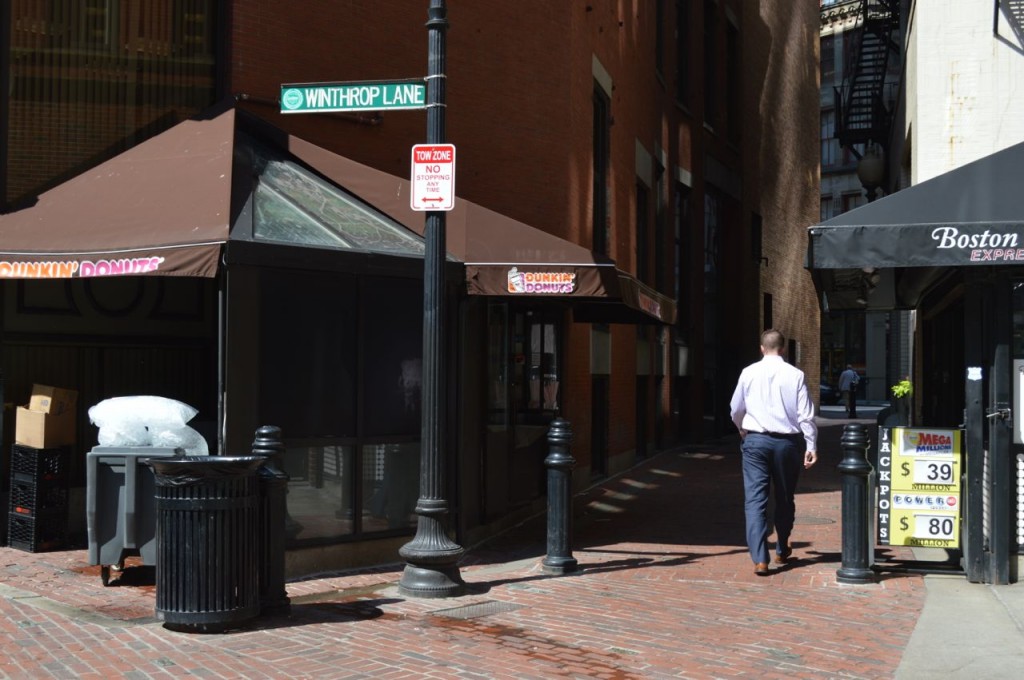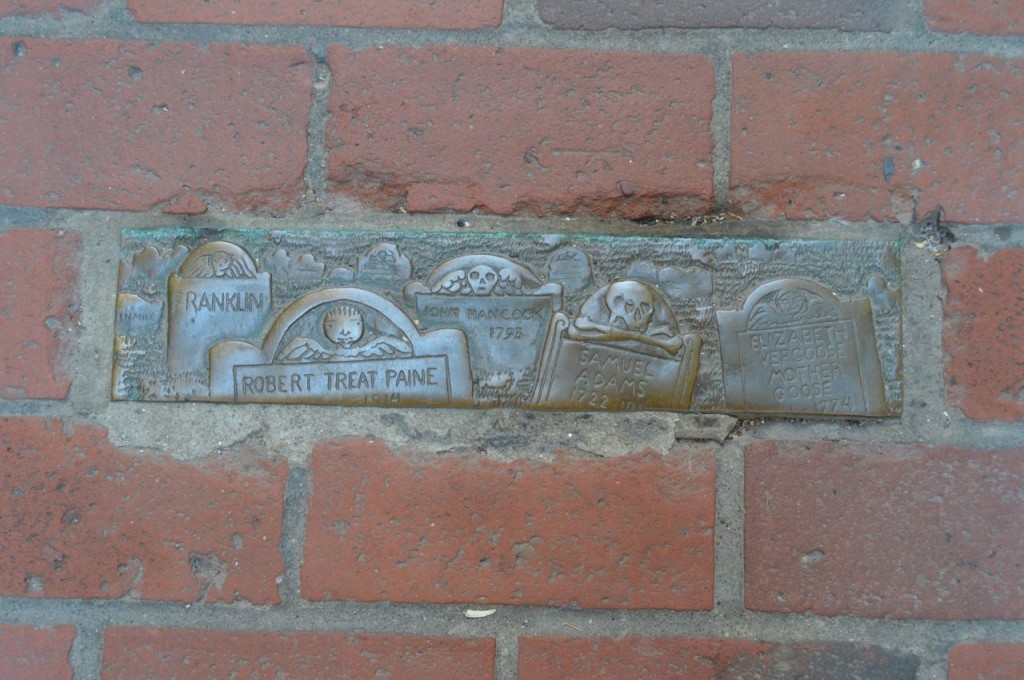
In Downtown Boston, bridging Otis and Arch Streets is a narrow pedestrian walkway called Winthrop Lane. This exemplification of Boston’s characteristically skewed streetscape, narrow throughways and one-way passages is a quaint walk-through for pedestrians strolling through the heart of the Financial District. But despite its charm, Winthrop Lane leaves something to be desired.
Adding to its appeal is a public art installment aptly called Boston Bricks, which inlays the brick path with bronze reliefs that showcase some of the city’s most historically significant individuals and events like Paul Revere and the Boston Tea Party, for example.
Comprised of over 100 pieces, this work by Kate Burke and Gregg Lefevre funded by the Browne Fund and A. W. Perry and Ryan Associates, is arguably Winthrop Lane’s most attractive feature.
“They’re these great whimsical moments depicting an enraged Boston driver, the Boston Massacre, and so on,” said Max Grinnell, a professor of urban studies at the University of Chicago, who also maintains the blog The Urbanologist.
Winthrop Lane’s name, too, lends gravity to the walkway’s immense potential by providing everyone with a name directly tied to Boston’s founding in 1630. Lest we forget, it was John Winthrop who delivered the oft-quoted “City upon a Hill” sermon while anchored in Boston Harbor that set the course of Boston. His surname endured as one of the Boston Brahmins and that kind of staying power is not easy to come by in a city currently experiencing growth in terms of population and development at breakneck speed.

As part of that growth, Boston is enjoying a surge in wanting to activate and enliven public spaces that may typically lay dormant to the chagrin of residents and visitors alike.
Look no further than parks like The Lawn on D and Rose Kennedy Greenway, and even City Hall Plaza which surely many Bostonians were less optimistic that the seat of our municipal government would ever be anything other than a brick wasteland.
Faneuil Hall Marketplace, too, recently welcomed chairs, tables, reading materials, games and other activities to make the popular tourist destination more than just a shopper’s haven and intends to draw in more locals.
Even the underbelly of the I-93 Expressway as it cuts through the South End is on the brink of being transformed into a non-traditional park situated directly beneath a major highway.
Refurbishing Winthrop Lane without jeopardizing the Boston Bricks would dually benefit the space itself and passersby. For those who don’t take the time to glance downward while making their way through, failing to notice Boston’s pivotal moments captured in bronze, Winthrop Lane is nothing but an extension of the sidewalk anchored on the Otis Street end by a tired newsstand and Dunkin’ Donuts kiosk.
If, perhaps, the lessons learned in reviving City Hall Plaza, Faneuil Hall Marketplace, the Greenway and The Lawn on D aren’t translatable to this particular walkway, Boston planners, designers and place-makers could turn to suburban Lexington for inspiration.
With strong revolutionary ties to Boston, Lexington would be a logical choice for emulation. According to Wicked Local, the town’s Economic Development Office implemented a temporary, month-long installment at Grain Mill Alley boasting “outdoor seating, an outdoor playhouse, and a checkerboard to add a playful element of surprise. The temporary nature of the project will allow the town to test the space and gather public feedback.”
The project cost just $4,500 and will help inform future possibly permanent features as well.
“This type of innovation in public space elevates the Lexington Center from ordinary to extraordinary,” said Melisa Tintocalis, the Economic Development Director at the Lexington Center Committee. “It offers a new invitation for business activity.”
Boston has already proved that the cost for these kinds of civic innovations can be offset by private donations. City Hall Plaza was bolstered by goods from retail giant Wayfair and local business Beantown Athletics including a giant chess set, hammocks and frisbee games.
For some 40 adirondack chairs and a patch of green turf which I’m sure I’m not alone in hoping is a mere placeholder for actual greenery, the City of Boston spent about $800 and about $630, respectively. That’s it.
For Winthrop Lane, possibilities abound.
“So you have this wonderful start of place-making already in, well, ‘place,'” added Grinnell. “I’d love to see something like ‘Weekends on Winthrop’ where people come out and do their own ‘bricks’ with pieces of paper, offering their own Boston moments. It could be temporary and you could bring out local food carts and other folks to do free music performances and the like.”
With the City of Boston and Mayor Marty Walsh accepting ideas for Imagine Boston 2030, the crowdsourcing of upgrades for the city’s first master plan in 50 years, a Winthrop Square facelift could be a possibility in the near future. And, given nearby Downtown Crossing’s ongoing retail and development renaissance, Winthrop Lane could act as an outlet for experimental ideas to re-imagine how we collectively use public spaces and how it could in turn increase activity for everyone to enjoy.

